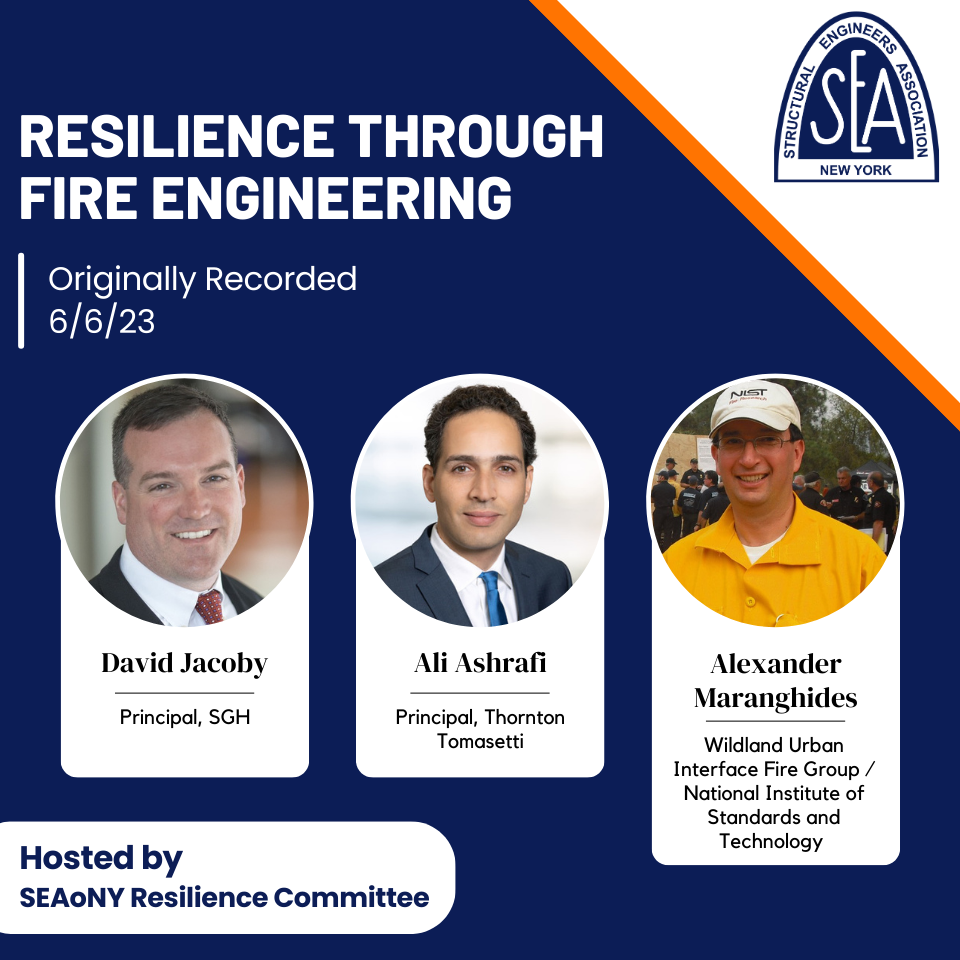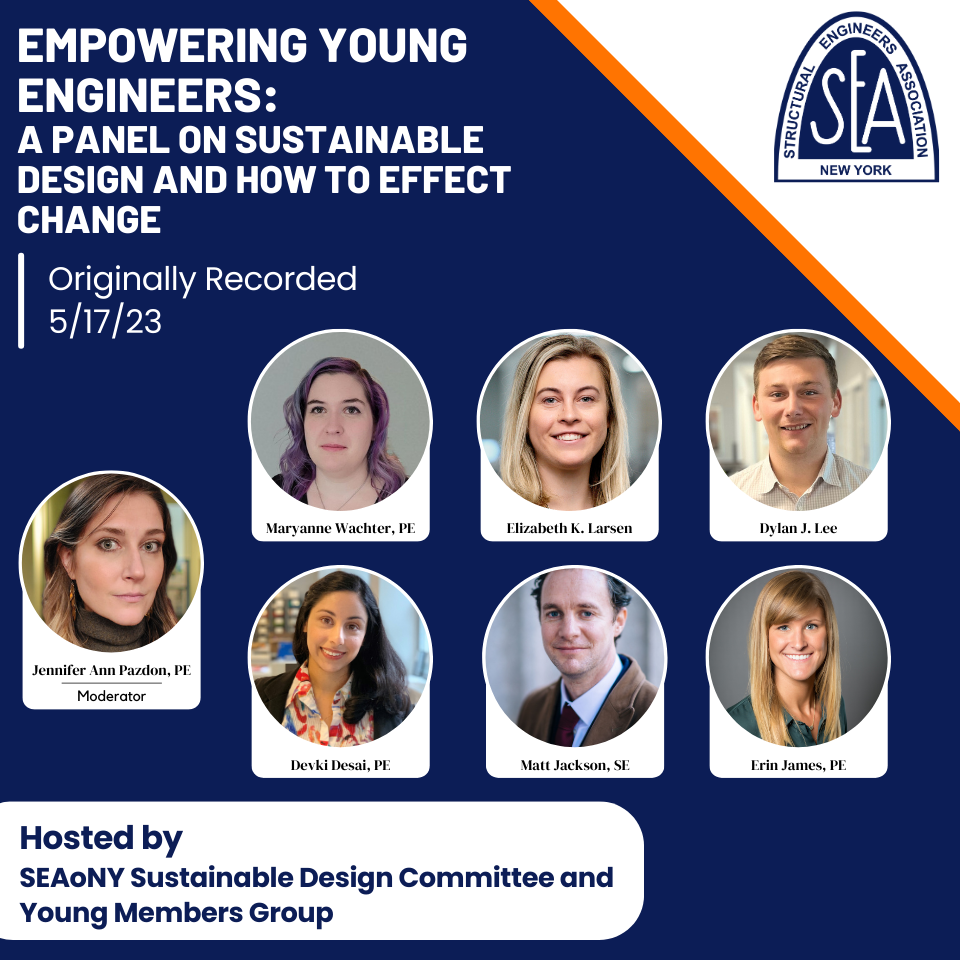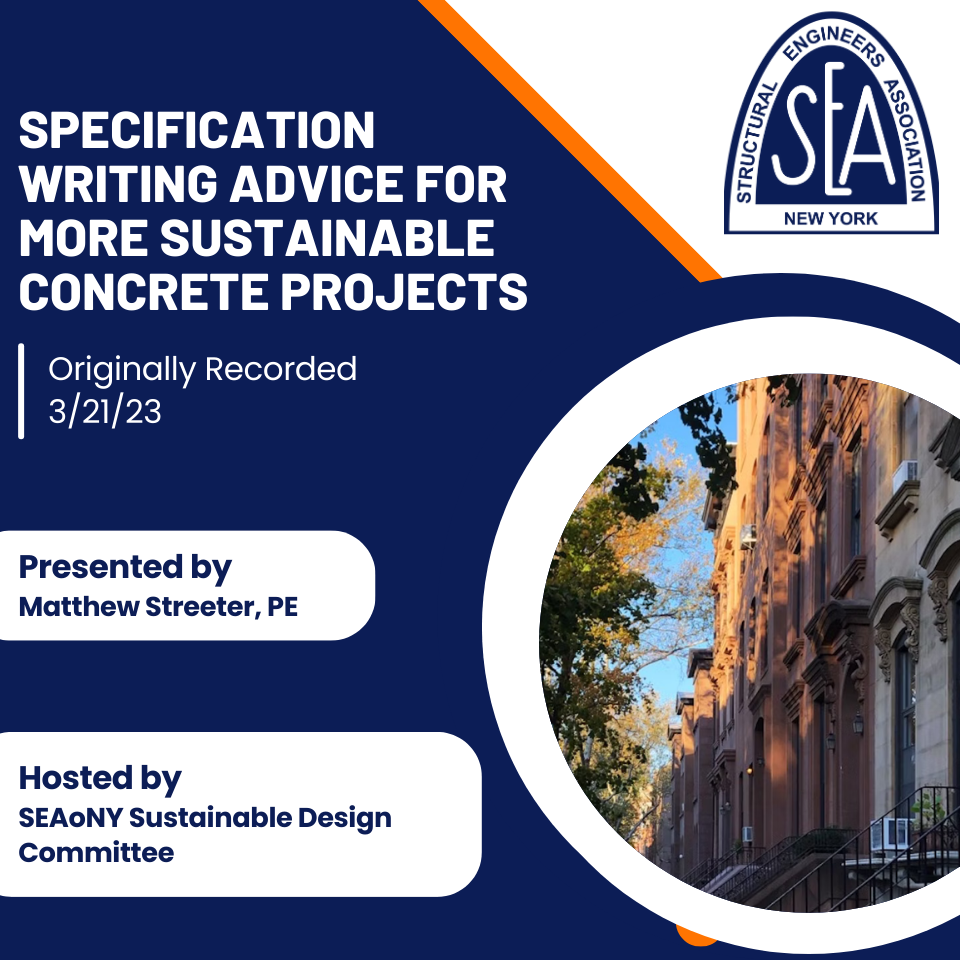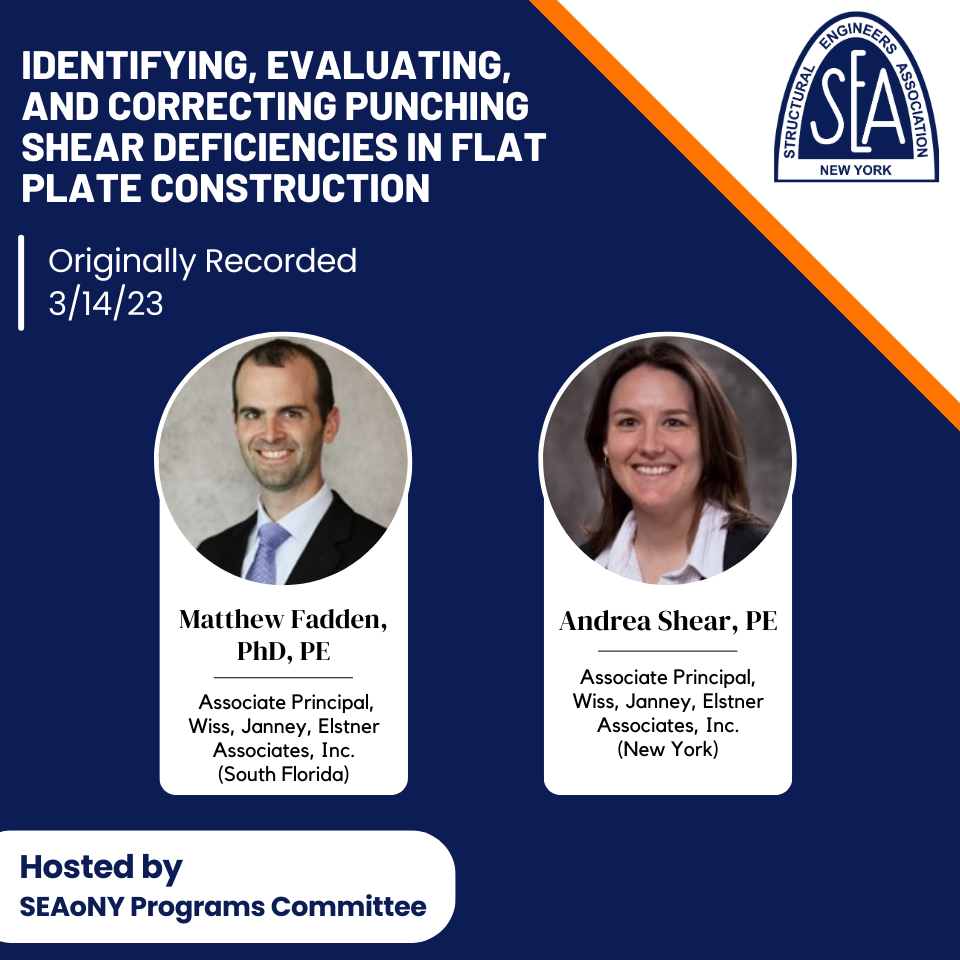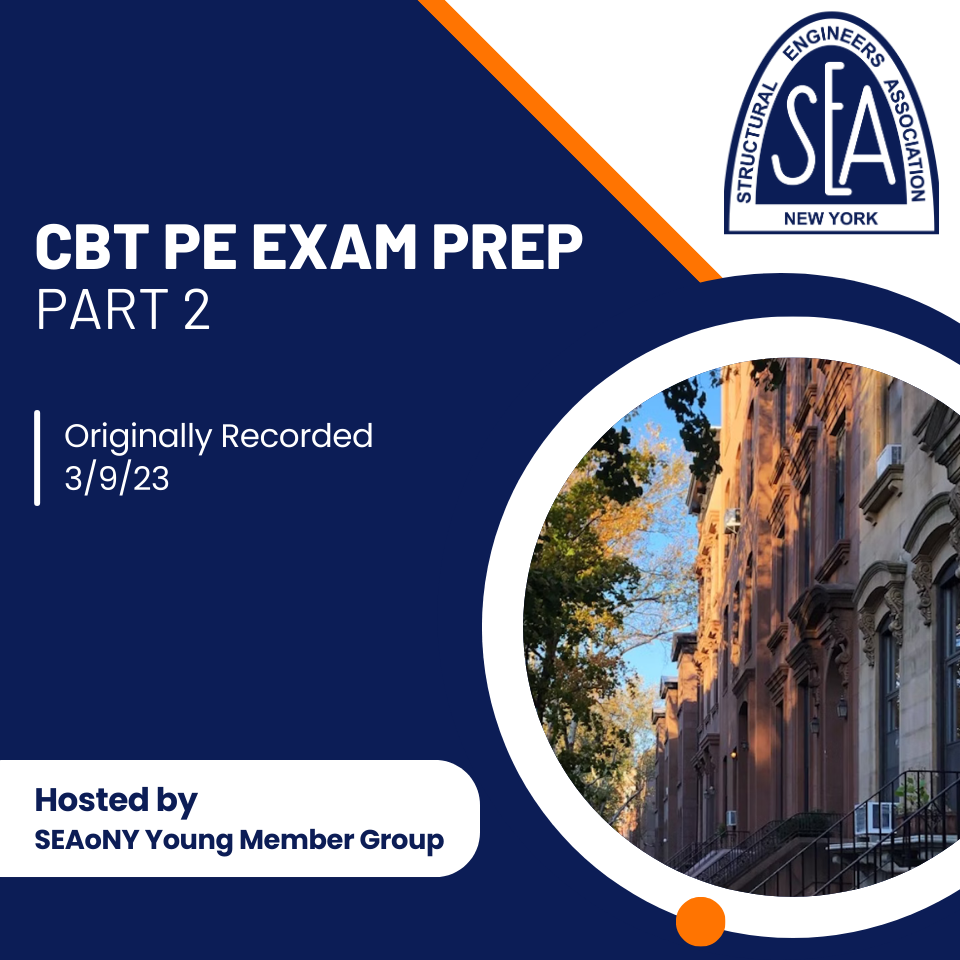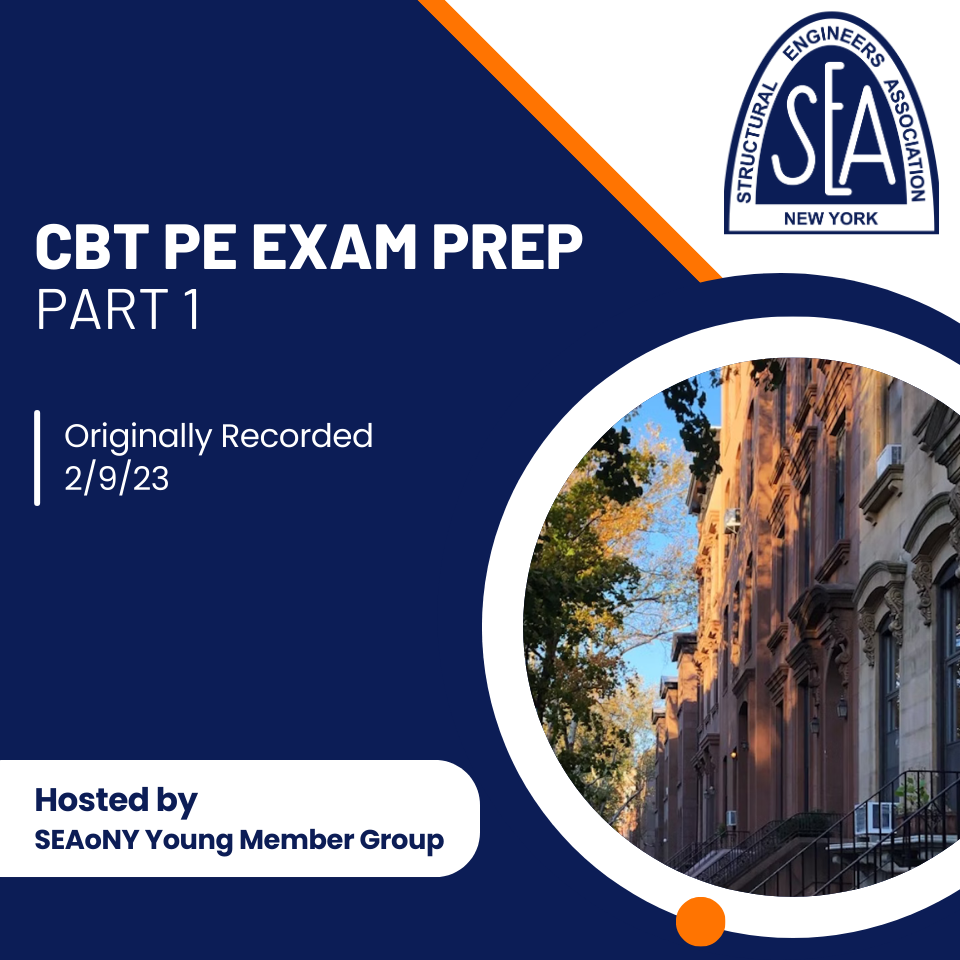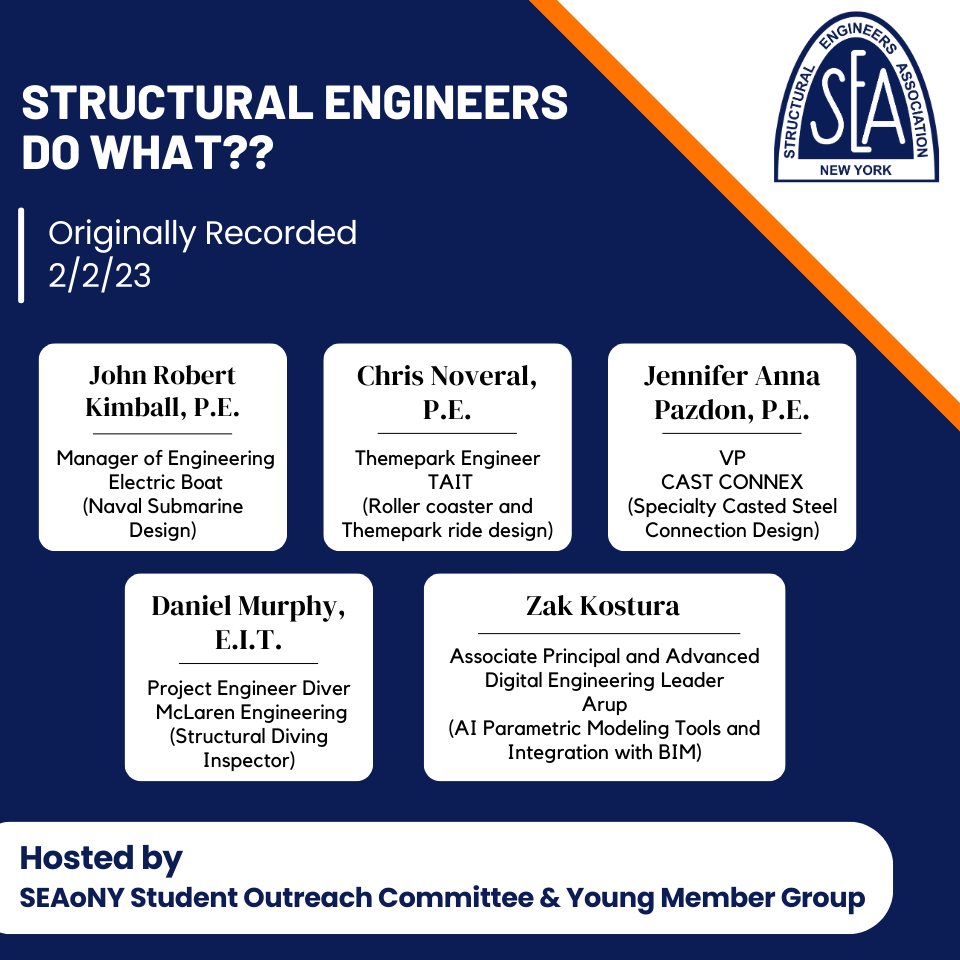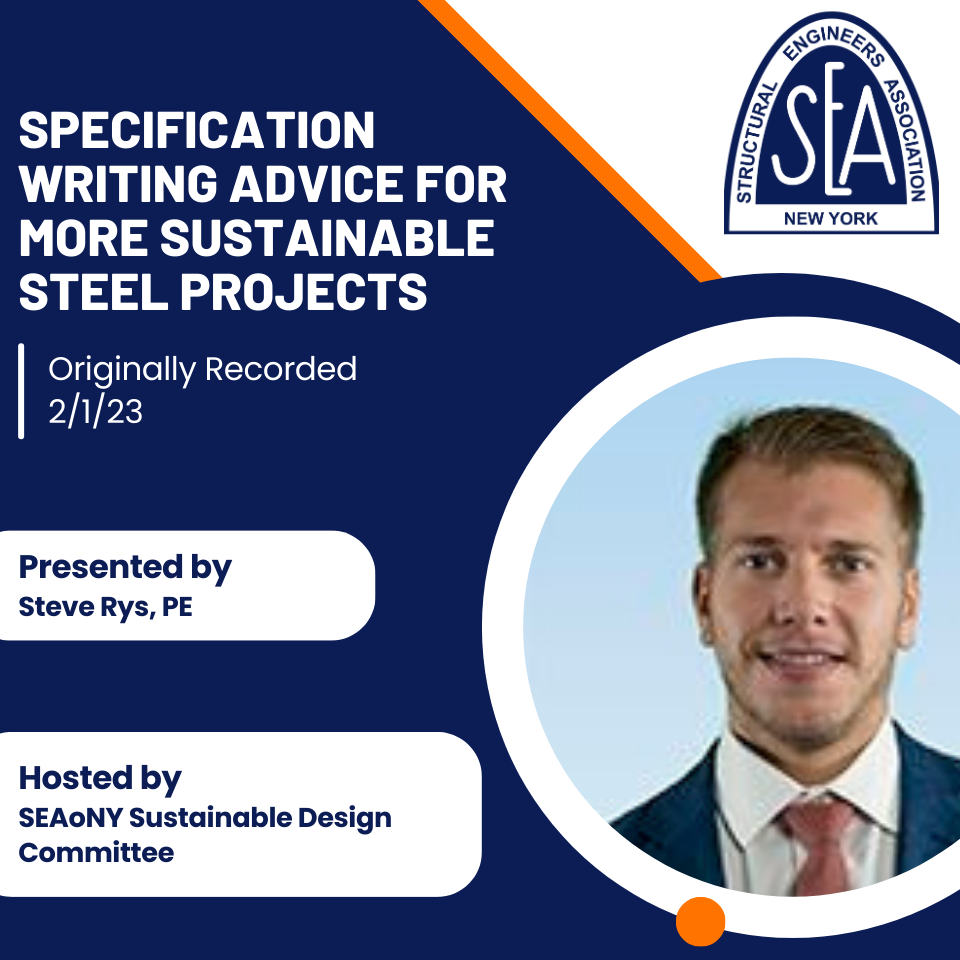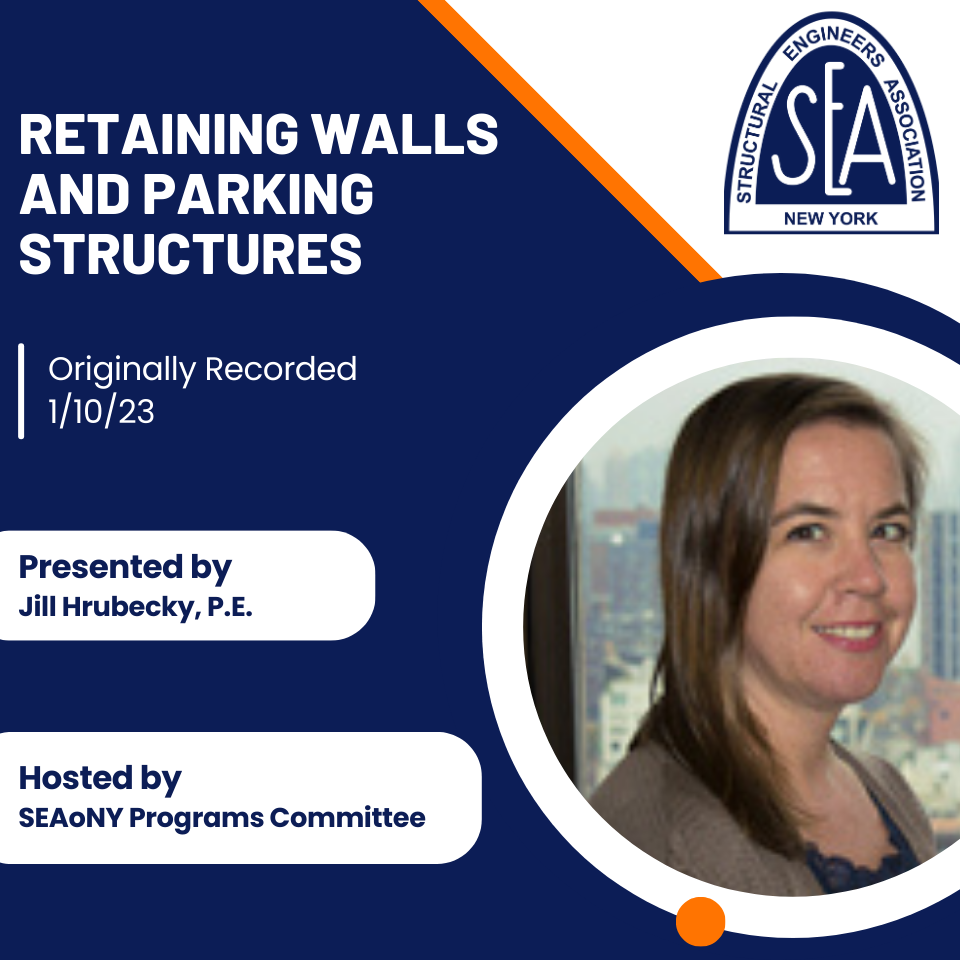HOME | CONTACT US | ADVERTISE |
Past Event RecordingsSEAoNY and its volunteer committees host a number of informative seminars and webinars throughout the year. Videos are posted approximately one month after the event and are available for free to SEAoNY members. Please note, you must be signed in to your member account to view recordings. Not a SEAoNY member? Join today! |
| The webinar reviewed the new legal requirements for property owners to file compliance reports for parking structures. It covered the various types of parking structures, their maintenance challenges, and the inspection nuances associated with each system, as well as key code requirements and lessons learned from Cycle 1A. Speakers discussed the harsh environmental conditions these structures face, the six-year inspection mandate in effect since January 1, 2022, and the NYC data that informed the current Code and Rule. The session also outlined the process for becoming a Qualified Parking Structure Inspector (QPSI) and shared early observations from initial inspections. |
| In this webinar, we looked at ways to cut embodied carbon in concrete through smarter structural design. By optimizing foundations and slabs, we can reduce material volumes—and emissions—without sacrificing performance. Strategies covered include spread footing optimization, avoiding excessive depths, frost-protected shallow foundations, using flowable fill or cellular concrete, right-sizing wall thicknesses, incorporating Geofoam for retaining walls, and slab-on-grade alternatives. |
| The presentation addressed some of the important elements for mass timber connection design, including structural design provisions, fire-resistant connection design, and details to consider when using pre-engineered solutions such as beam hangers. A discussion of the influence of connector placement on brittle failure in wood elements, seismic drift performance, and fire performance was included. |
|
SEAoNY's Young Member Group presented Part 2 of its PE Exam series, offering tips and insights on tackling the computer-based exam. Experienced young engineers shared advice, boosted attendees' confidence, and answered questions.
|
| This event, "When Disaster Strikes: Emergency Readiness for Floods and Fires," explored real disaster events, shared practical preparedness strategies, and provided actionable tips to enhance resilience against floods and wildfires. |
| SEAoNY's Young Member Group hosted a PE Exam Application presentation featuring a panel of recent applicants who shared insights and answered questions about the computer-based exam application process. |
|
This lecture provided an in-depth look at the planning, design, and construction of the new Highmark Stadium for the Buffalo Bills. It highlighted the structural systems involved and explored the technical challenges and coordination required to bring such a large, modern venue to life.
|
.png) |
This webinar explored local buckling in steel structures, its historical development, and its role in modern design. It highlighted how understanding and leveraging buckling can lead to efficient structural solutions for today’s global infrastructure challenges.
|
|
The presentation explored how technology has sped up the structural engineering process, using connected models for faster design-to-fabrication transitions. Case studies from NYC projects highlighted its role in sustainable buildings. Experts from AECOM Tishman, Severud, and Qnect shared insights from engineering, construction, and tech perspectives.
|
| Topics explored included Forensic Structural Engineering, Historical Preservation/Adaptive Re-use/Renovations, Geo-structures, Facade/Curtain Wall Engineering, and Disaster Prevention and Resiliency with Structural Engineering. |
.jpg) | This event reviewed portions of the 2022 NYC Building Code related to construction safety and lot line construction, including monitoring, special inspection, excavation, demolition, and site safety requirements. Building Code chapters discussed included Chapter 17, Chapter 18, and Chapter 33. Examples and case studies were reviewed. |
|
SEAoNY's Young Member Group hosted part two of a PE Exam Application presentation to discuss the application process for the computer-based PE Exam. A group of YMG members who have recently submitted their applications for the PE Exam will host a panel discussion to answer questions you may have regarding the process.
|
.png) | As sustainability and carbon reduction goals creep into projects, engineers will need to become familiar with the documents that record building materials' impact to the environment: environmental product declarations or EPDs. This webinar will provide engineers with an introduction to EPDs. Attendees will learn how to read EPDs and extract the relevant sustainability information for their projects. A breakdown of the key components of EPDs will be provided. The presenter will also explain how the documents are developed and maintained. He will then discuss potential stumbling blocks and give insider tips for successful sustainable engineering implementation. |
| A unique architectural form for a proposed supertall in New York City led to a creative structural solution by WSP. The solution required detailed analysis and understanding of the load paths, resulting in atypical impacts to the building’s non-structural system and leading to adjustments in the fabrication and erection of the building structure. This course covered the general structural systems and unique aspects of the design and construction of The Spiral. |
| This webinar was the second of a SEAoNY series on diversity, equity, inclusion, and belonging, focusing on performative versus substantive practices toward meaningful change. Participants learned how to leverage inclusion and belonging in recruitment and retention practices. They stayed for a facilitated dialogue with their colleagues, where they could share ideas and insights! |
|
Presented by the NYC Department of Buildings Operations Bureau: This recording introduced a PW1 user guide updated specifically for DOB NOW filings. An overview was provided of the DOB NOW application process and how to navigate the new user guide from documents to technical reports.
|
|
The presentation highlighted the significant global economic impact of corrosion, estimated at 3% of the global domestic product, and addressed the lack of design processes for corrosion resistance in structural engineering. It covered scientific principles of corrosion, long-term field data on steel structures' performance in various environments, and both field and laboratory methods for corrosion assessment. Practical strategies for improving corrosion resistance were also discussed, leaving attendees better equipped to enhance the durability and life-cycle costs of their structures.
|
| This panel focuses on recent advances in fire engineering and strategies to achieve fire resilience in buildings and communities. The panelists discussed different aspects of fire protection engineering and fire life safety, performance-based structural design for fire, and wildfires that impact wildland-urban interface communities. |
| As climate change becomes an increasingly pressing issue, it is important now more than ever for structural engineers to put sustainability at the forefront of their work. This panel is targeted towards young engineers & students who are looking to learn more about sustainable structural design and hear from those who have integrated sustainability into their practice. |
| The speakers discuss design and construction aspects of this unique award-winning project. The Syracuse Stadium (a.k.a. JMA Dome), a 50,000 seat multipurpose domed stadium, opened in 1980 as the first, and remains the only, covered stadium in New York. The stadium hosts Syracuse University athletics as well as hosting a myriad of events serving the campus and the greater Syracuse community. The stadium has recently undergone a dramatic renovation featuring the replacement of its air-supported roof with cable truss roof structure. Geiger Engineers designed and engineered the new roof and led the project design team. The project includes a new sound system, sports lighting, a center hung video scoreboard, and air-conditioning of the stadium facility. The new roof is the first-of-its-kind cable truss clad partially with tension membrane and rigid panels developed to exploit the geometric configuration of the original air-supported roof. The new roof covering 23,250 square meters (250,000 square feet) features an external steel crown truss supported on the original concrete ringbeam and its supporting structure. Whereas the original roof required snow to be melted or otherwise removed, the new structure is designed to support more than 6,350,000 kg (7,000 tons) of snow while providing natural daylighting of the facility. |
| Structural Engineers have the opportunity to include language in project specifications that will influence the selection of materials by the procurement team. When carefully researched, the specification team can identify concrete suppliers that will offer products manufactured with the lowest impact to the environment. In this webinar, the presenters will offer the appropriate background information and potential approaches to defining embodied carbon limits within the concrete specs that can be used to determine the acceptance of suppliers and products. They will also outline two approaches for including these embodied carbon limits and discuss the pros and cons of each approach. |
| The 2021 collapse of Champlain Towers South in Surfside, FL has emphasized the importance of identifying, evaluating, and correcting punching shear deficiencies in flat plate construction. In practice, punching shear related cracking can be challenging to identify as cracking is usually concealed. Current and previous code equations are of limited use for evaluating the punching shear capacity of slabs with excessive top cover and low reinforcement ratios. This presentation describes approaches to screening for punching shear deficiencies, field evaluation of existing conditions, and punching shear strength evaluation. Also presented are cost-effective retrofits for strengthening slab/column regions where deficiencies have been identified. |
| SEAoNY's Young Member Group hosts a PE Exam tips presentation to discuss the strategies for passing the new computer based PE Exam. A group of YMG members who have recently taken and passed the PE Exam host a panel discussion to answer attendees questions regarding the process. |
|
SEAoNY's Young Member Group hosts a PE Exam Application presentation to discuss the new application process for the computer based PE Exam. A group of YMG members who have recently submitted their applications for the PE Exam host a panel discussion to answer attendee questions regarding the process.
|
| Structural engineering is a broad field touching a wide variety of industries/sectors which encompass far more than the typical "bridges or buildings." If you've ever been curious about what those opportunities look like, consider joining us for "Structural Engineers do WHAT??" - our latest Candid Conversations panel featuring panelists who forged structural-based career paths on roads less traveled! |
| Structural Engineers have the opportunity to include language in project specifications that will influence the selection of materials by the procurement team. When carefully researched, the specification team can identify structural steel manufactured with the lowest impact to the environment. In this webinar, the presenter offers the appropriate background information and benchmark criteria that can be used to determine the acceptance of suppliers and products. He also outlines the documentation that the supplier requires in order for assessment of their ability to meet said criteria. |
| With recent code changes, property owners are required by law to file compliance reports on these two unique structures. This presentation will review different types of retaining walls and parking structures, the maintenance difficulties and inspection nuances, and the details of the code requirements for each. |
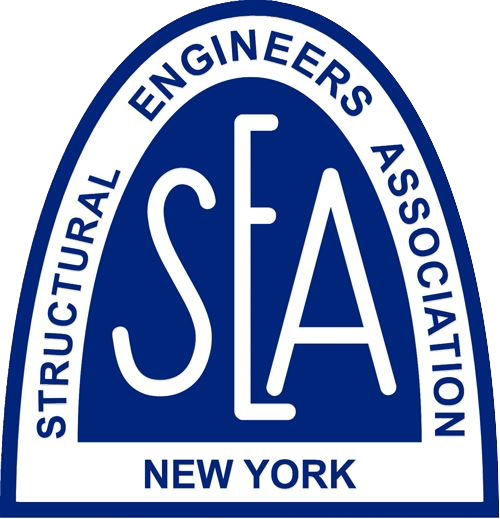
.png)
.png)
.png)
.png)
.png)
.png)
.png)

.jpg)
.jpg)
.jpg)
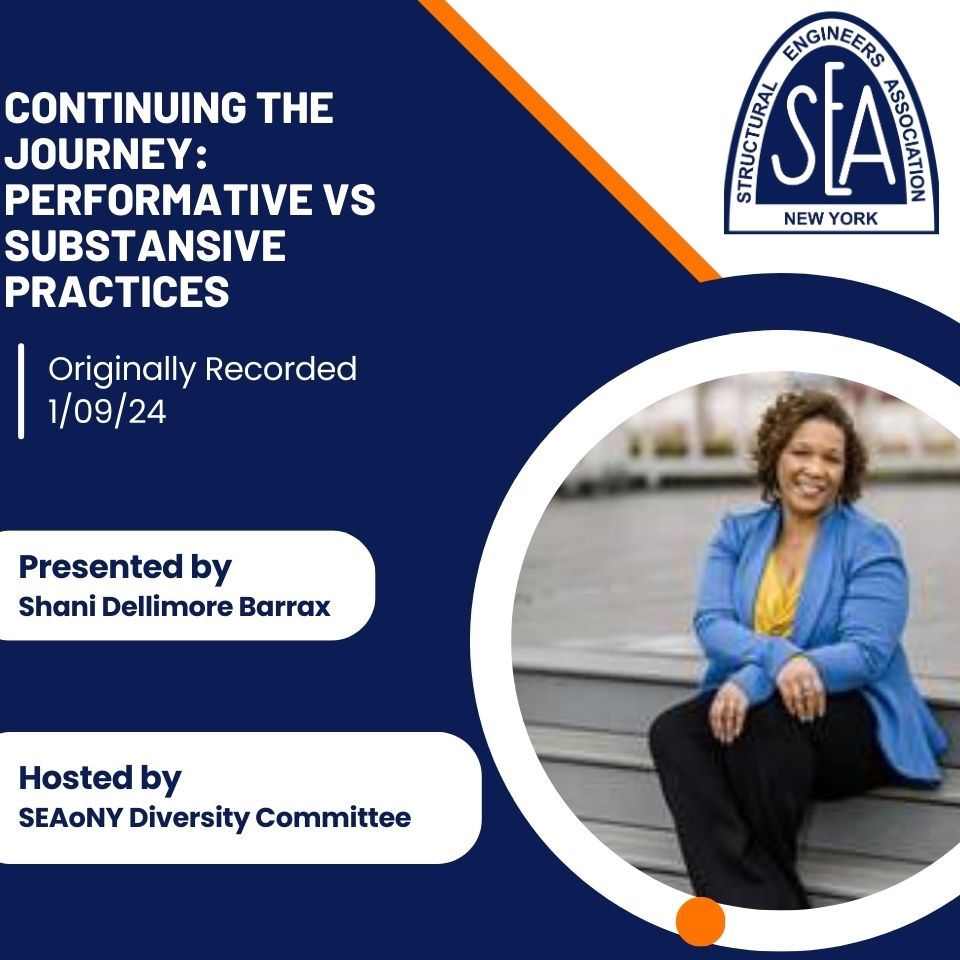
.png)
.png)
